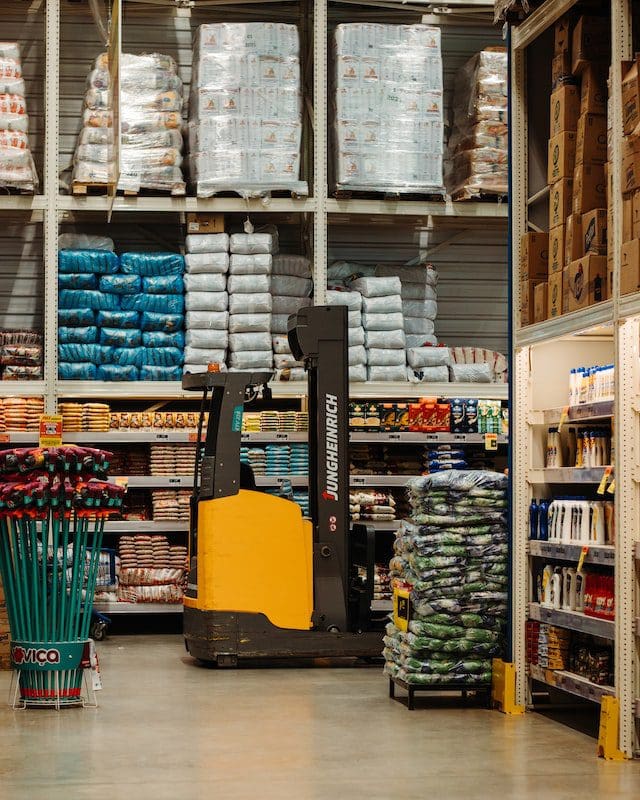As a manager, it is your responsibility to ensure that your team are well cared for and aren’t putting themselves at risk while working on-site. While injuries aren’t entirely preventable, you can significantly reduce the chances of someone being injured by taking several useful steps. To help you with this process, we’ve listed some things you should be doing to ensure you and your team are as safe as possible and properly taken care of by your employer.
Inspect Equipment Often
Injuries related to equipment can be one of the most common injuries in a warehouse for obvious reasons. Your equipment will be heavy, large, and have moving parts. Trapped fingers, crushed toes, and other injuries can be common, so it’s important to wear appropriate gear like steel-toed boots and ensure that your equipment is regularly inspected for faults. You can arrange a schedule for checking your equipment, and it’s worthwhile conducting this yourself to ensure you’re happy with how things look. If you’re unsure, it may be worth treating a piece of equipment as faulty and having a professional look at it to see if any repairs are needed.
Provide Regular Breaks For Staff
A lot of the time, injuries and accidents happen when someone isn’t concentrating. This lack of concentration can happen when your team members are tired and overwhelmed with work. This is one reason why ensuring your team is getting the proper number of breaks needed to stay focused at work is important. As well as this, you should also ensure that your team isn’t working unnecessary hours and are getting home to have the right amount of sleep to take on the next day without issue. You are responsible for ensuring your team doesn’t appear tired and unfocused. If you let someone operate heavy machinery when it seems as though they haven’t had enough sleep, and then an accident occurs, you may be held partially responsible.
Ensure The Place In Well-Ventilated
Not all injuries in a warehouse are caused by heavy machinery. A poorly ventilated warehouse could lead to members of your team developing respiratory diseases caused by the particles that may be released into the air when working with certain materials. A well-ventilated warehouse will reduce the amount of airborne material in the workspace and allow fresh air to enter unhindered. As well as this, a poorly ventilated warehouse can get very warm, and this excessive heat could lead to poor concentration and irritability, which can cause your employees to make more mistakes.
Teach Proper Movement And Handling
How your team moves items and handles equipment can impact their risk of injury. This is why teaching people the best ways to lift items and use tools and equipment safely is very important. Of course, if your employer fails to implement proper manual handling guidance and you or your employees get injured, you may have a claim on your hands. Back and arm injuries can be very common when lifting things incorrectly, and if this happens to you, you may want to look into a Quittance legal arm injury claim. To avoid injuries like this, it’s important to ensure your employer understands the need for proper manual handling training for you and your team.
Keep All Exit Routes Unobstructed
Emergencies can often inadvertently lead to further injuries, especially during evacuation. For example, a fire in your warehouse is a threat. Still, when people are trying to escape in a panic, this can lead to tripping over objects, trampling, and sustaining blunt-force injuries when colliding with things like doors, shelves, and tables. This is why it’s essential to have a proper evacuation plan and train your team to evacuate in an orderly fashion. While this is easier said than done when it comes to an actual emergency like a fire, ensuring that all routes to get out of the warehouse are clear at all times. Nothing should be left in these pathways for any length of time, as an emergency will often happen without warning, resulting in those items being left in the way of people trying to escape.
Develop In-House Safety Routines
Creating safety routines for you and your team to follow is essential to reducing risk; each routine will differ from business to business. You should create a routine for the use of equipment, movement around the warehouse, the checking of equipment, and the storage of items so that you can ensure that things are being done correctly. This will help to reduce the chance of injury significantly when it comes to these areas of work. You may also want to implement end-of-day checks to ensure that the place is secure, reducing the risk of theft or anyone malicious gaining access to the warehouse that may cause your workers harm. You might struggle to enforce a lot of these routines and checks alone, however, so it may be worthwhile delegating certain checks to other responsible members of your team, creating rotas to ensure that each area is looked after adequately.
Featured Photo by Eduardo Soares on Unsplash





